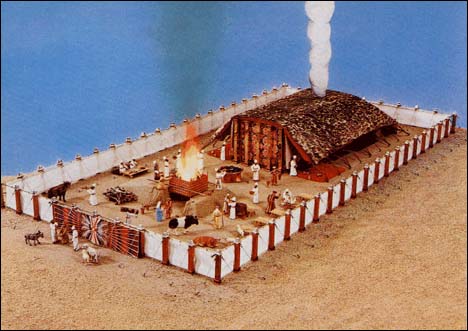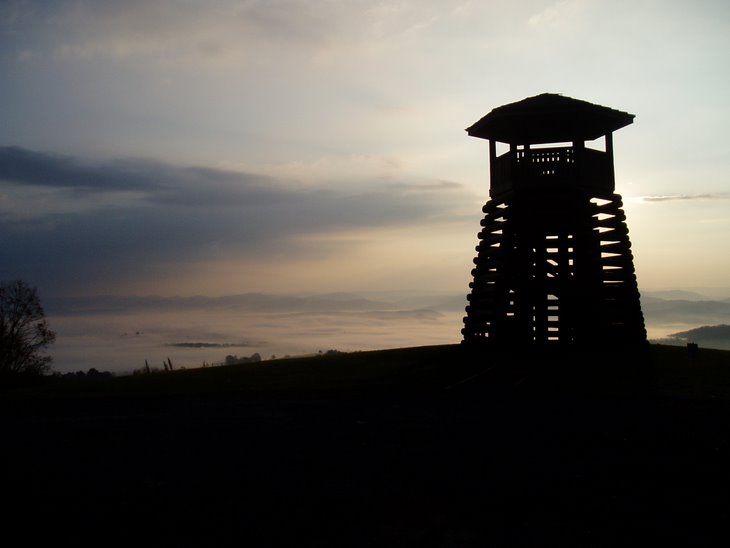
It is a hallmark of Reformed Worship that we believe that when two or more are gathered in the Name of the Father, Christ is with us. What we often fail to realize though when expressing this truth is how this ties directly into the relationship between the Israelite tabernacle and the New Testament, post-Easter and Ascension Church. Paul teaches us in
1st Corinthians 10:1-6 that God in Christ dwelled among us now as He did with the Jews in Sinai, in the Wilderness. Just as God fed the Israelities with spiritual food and spiritual drink God today feeds us through the indwelling of the Holy Spirit. The Tabernacle was God's house in the wilderness of Sinai. He commanded the Israelites to build this house as he instructed them so that God may have a proper place to dwell with his people. Just as God dwelled in the tabernacle of Sinai in the time of Moses, we are today still in the wilderness and God through and in and by his Church dwells among us. The Church can expect the presence of God, manifesting himself in Worship if we properly conduct ourselves in his Worship. But how do we do that?
Well first before I answer that question we have to ask ourselves what is the Church? Well the Church at its most basic is the bride of Christ. And what does Scripture say is one of the duties of the Bride to their Groom? To submit themselves to his authority and to serve him in love and gratitude. This use of the motif of the Bride and Groom is deeply rooted in Paul's theology and in the imagery Christ uses when describing his own relationship to the Church and his disciples. For example Jesus in the questions from
Matt 9:14-16 to those who wondered why John's disciples fasted and the Pharisees fasted says,
"The attendants of the bridegroom cannot mourn as long as the bridegroom is with
them, can they? But the days will come when the bridegroom is taken away from
them, and then they will fast."
So here we have an example of Christ using this archetype for the Church by comparing his disciples, those who follow him (i.e.- Christians), to his Bride-to-be. Now that Christ has died and arisen from the grave and ascended into Heaven his "marriage" to the Church has been consumated in this act. So we are to look at worship primarily as the relationship between Christ and his Bride, the Church.
In this context we look at the ancient Tabernacle as being the example of what the particular church should be, not just a place of wood and stone (it is worth noting that a storefront or Middle School Gym is just as much a Tabernacle as a 15th Century cathedral or a sanctuary built in 1953) but a place where God comes to dwell with His people. The Church is God's special dwelling place, just as the Tabernacle was for the ancient Israelites.













1 comment:
Of course the original comments about the CPM turned out to be true.
Post a Comment